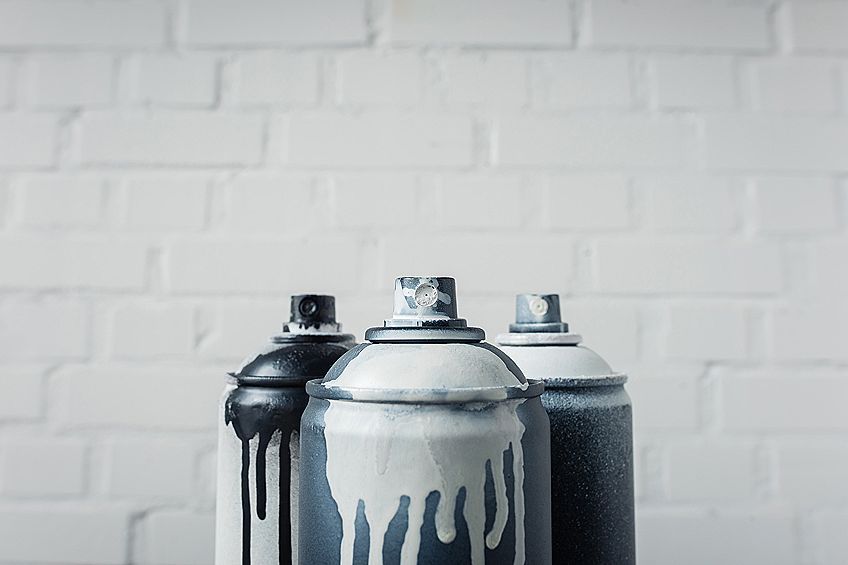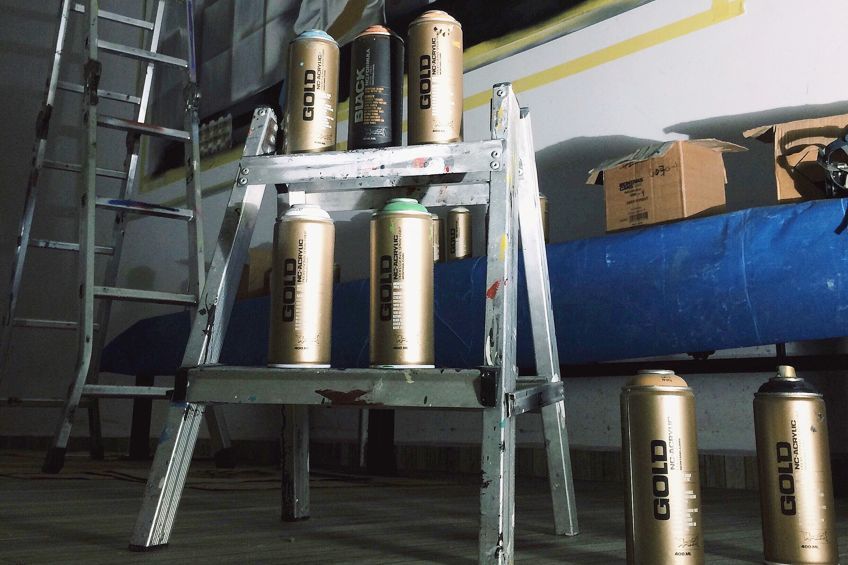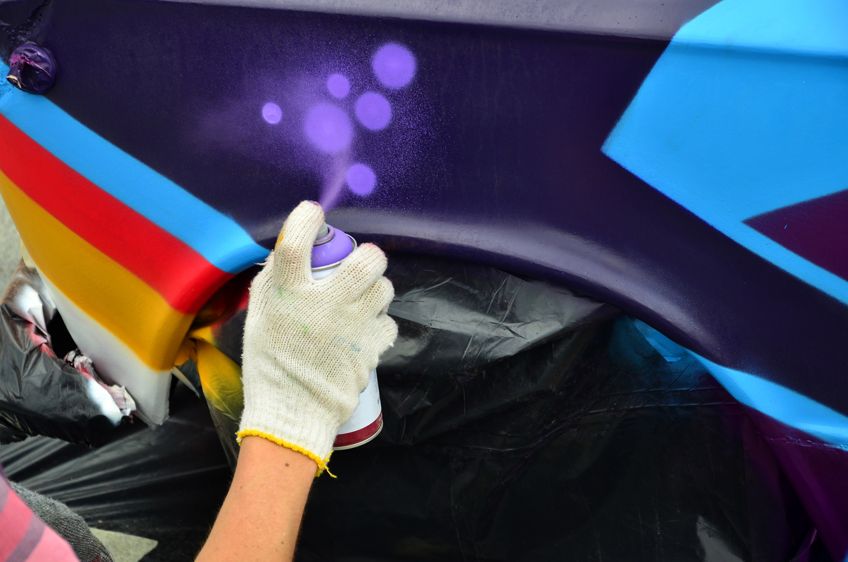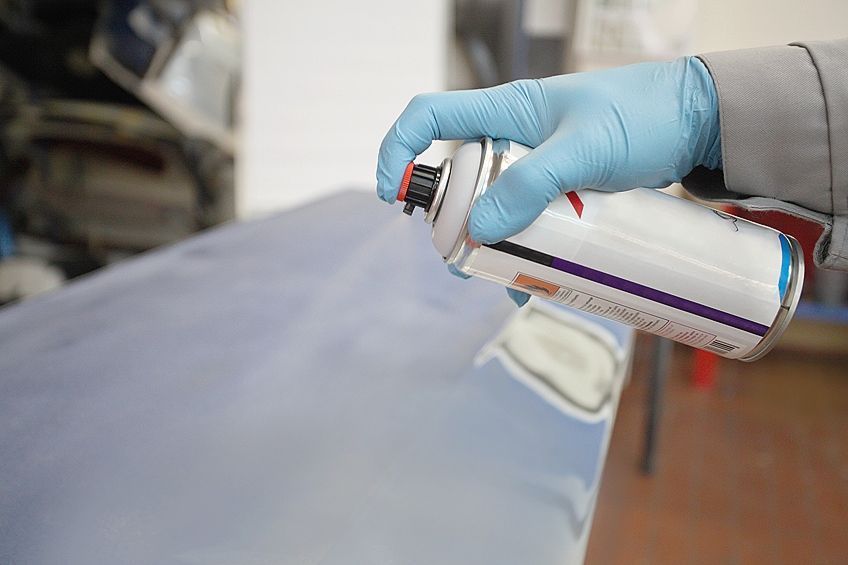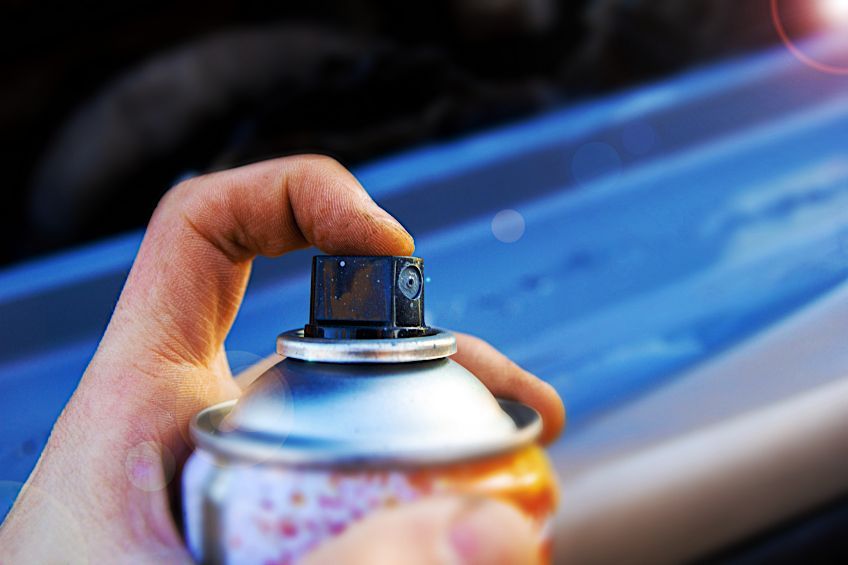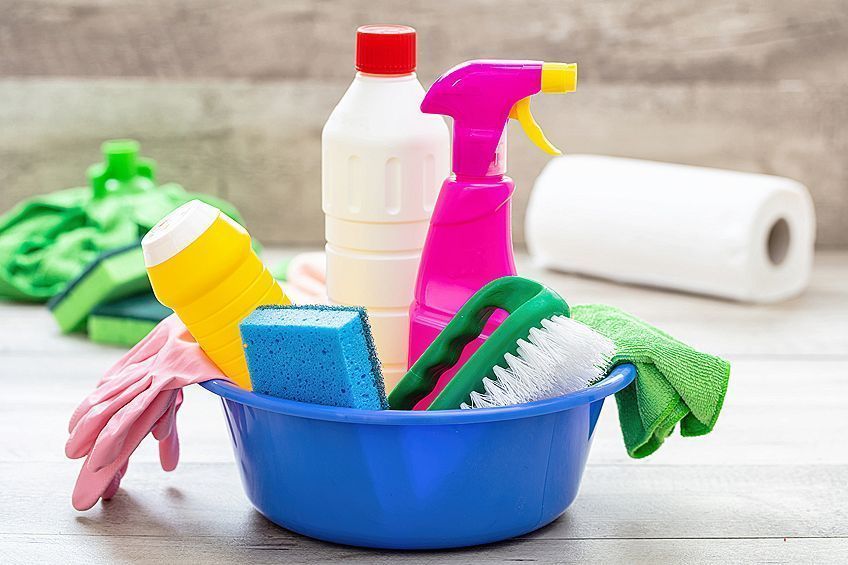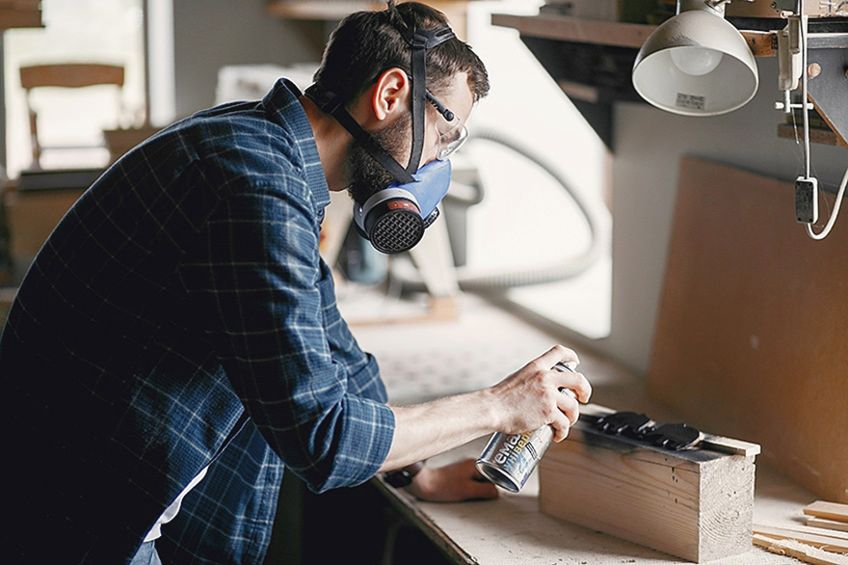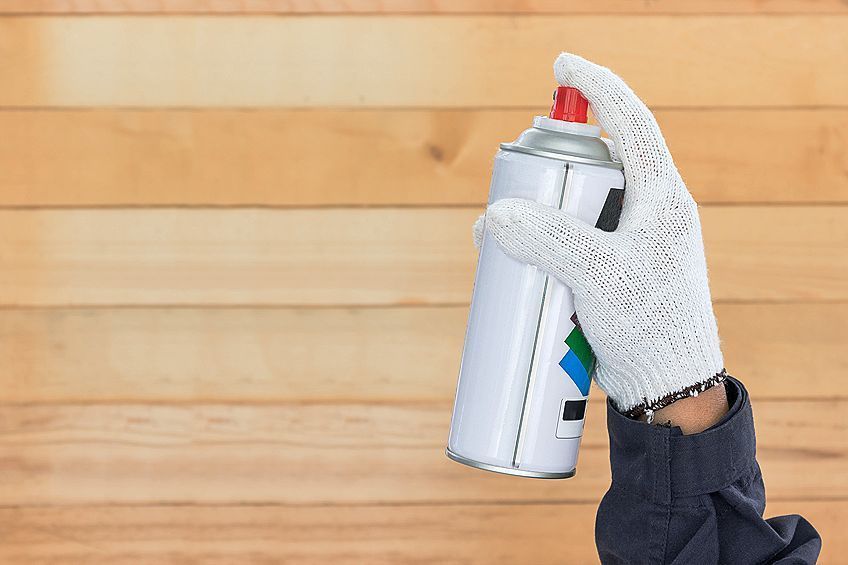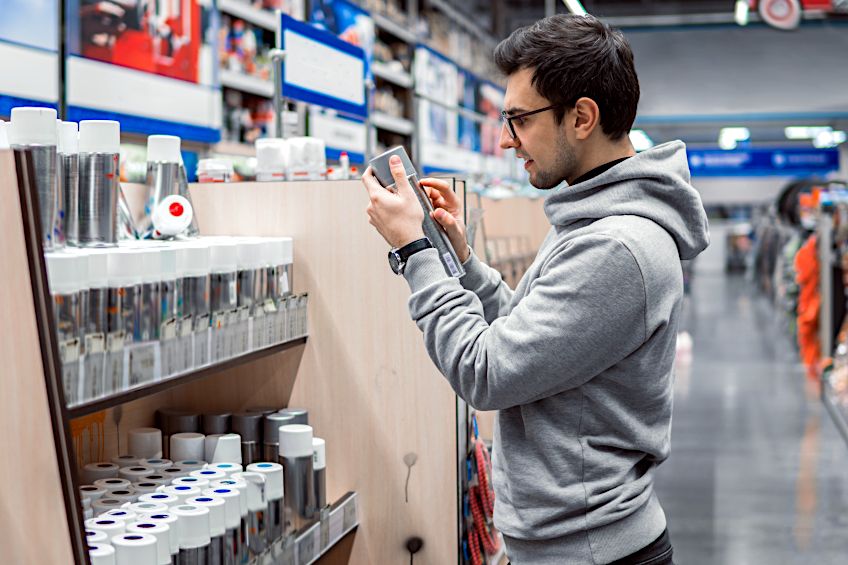Is Spray Paint Waterproof? – Finding Water-Resistant Spray Paint
This post may contain affiliate links. We may earn a small commission from purchases made through them, at no additional cost to you. You help to support resin-expert.com
When choosing a surface coating for your workpiece there are loads of things that one considers. Will this color match the rest of the space? Will the pain be thick enough for the surface? Do you have enough paint to cover the entire workpiece? These are all perfectly reasonable concerns to have, but if your workpiece will be situated outdoors, there can be even more variables to consider besides aesthetic ones. If your workpiece will be in the sun during the day will the paint split and crack? Will insects and ambient moisture chip away at your paint job? Will the paint you’ve chosen be washed away when it begins to rain? The latter is a major concern, and since most of us use spray paint these days, let’s have a look at whether or not spray paint is waterproof, and if not, what you can do to work around this problem.
Table of Contents
Is Spray Paint Waterproof?
Is spray paint waterproof? Sure, most spray paints are resistant to the effects of moisture. They sort of have to be, considering how thin an individual coat of spray paint is, but this doesn’t mean they’re waterproof, a characteristic that is typically measured by a substance or object’s ability to be exposed to excessive, consistent amounts of water, or be submerged for long periods of time. This being said, let’s have a look at which types of spray paint are waterproof.
| Type of Spray paint | Is It Water-Resistant? |
| General-purpose spray paint | Water-resistant |
| All-purpose spray paint | Waterproof |
| Rust-prevention spray paint | Waterproof |
| Enamel spray paint | Waterproof |
| Special-use spray paint | Subjectively water-resistant or waterproof depending on the formula used |
| Automotive spray paint | Waterproof |
| Aircraft spray paint | Waterproof |
General-Purpose Spray Paint Formula
As the name suggests, this type of spray paint is meant for various everyday applications, whether it be a kid’s school project, or giving a wooden workpiece a touch-up. This type of spray paint is usually graded for use in a wide variety of materials including metal, wood, plastic, vinyl, glass, and even ceramic in some cases, which is pretty cool. General-purpose paints typically aren’t waterproof, unless specifically formulated and marketed as such, but they do possess a certain degree of water resistance, which is sufficient for some of the aforementioned applications.
These spray paints can be purchased both in-store and online, and generally aren’t expensive either.
All-Surface Spray Paint Formula
If general-purpose spray paint is the stuff you keep underneath your kitchen sink in case you need to spray your car’s bumper, or your kids have a science fair project due the next day, all-purpose spray paint is one step up from this. Being even more versatile and hard-wearing, all-purpose spray paint is used by both hobbyists and professionals as a quick and effective way of doing the odd spray job.
All-purpose spray paints tend to have a decent degree of waterproofing to them, as they’re graded for use both outdoors and indoors. These paints also tend to be self-priming as they’re designed to save you both time and effort, which is great if you have a last-minute touch-up job to do. However, due to their versatility and extensive color range, these can cost a bit more than their general-purpose counterpart.
Rust-Prevention Formula
This type of spray paint is typically used in industrial and/or construction applications where large metal surfaces will be exposed to the elements for long periods of time. It can also be used when a metal structure will be partially submerged in still water for short periods. As the name suggests, this type of spray paint is designed to stave off oxidization on metal surfaces, a process through which metal corrodes or “rusts”. Rust-prevention spray paint is designed to prevent surface rust only and will not prevent rust from occurring on the inside of a metal object. This being said, it is a good way to ensure that air-borne moisture particles aren’t given the opportunity to get that far.
Rust prevention spray paint can then be characterized as waterproof spray paint.
Enamel Spray Paint Formula
Enamel spray paint has been used since its inception to prevent corrosion and coat highly trafficked surfaces. This paint is extremely durable and is available in a wide variety of finishes and textures for your convenience. Enamel paint provides a strong protective layer to ensure your workpiece is unaffected by impact, abrasion, heat, infestation, and moisture.
Is enamel paint waterproof though? Yes, enamel paint is one of the few paint types that are inherently waterproof thanks to the nature of its chemical composition. Enamel spray paint is also extremely versatile and can be used on many surfaces for a number of applications. Contractors and automotive engineers often swear by this paint’s durability and reliability.
Special-Use Spray Paints
Special-use spray paint can be characterized as niche paint. These are usually very specific textures or finishes that are used for interior decoration, and therefore rarely have any characteristics that would be usable in hard-wearing applications. Does this mean that all special-use spray paint formulas are averse to moisture?
Special-use spray paints tend to be water resistant, much the same way that general-purpose spray paint is.
Does this mean that they’re waterproof though? Unfortunately not, there are high-end special-use spray paints that are water resistant, quick drying, and self-priming. As you could imagine though, they tend to cost significantly more than your run-of-the-mill special-use spray paints.
Automotive Spray Paint Formula
Automotive spray paints are some of the most durable spray paints on the market. There are two types of automotive spray paints, namely those that are used inside the engine bay of a vehicle (sometimes on the engine block and cylinder head directly) and those that are used on the chassis and body panels of the vehicle.
Both are extremely durable, but they have different jobs to do and therefore have different compositions. Spray paint that is used on the engine bay of a vehicle would consist of a high-heat enamel formula due to the crazy temperatures at which some engines are capable of reaching, and they’re also waterproof as a result. Paint used on body panels tends to be applied conservatively, and while they might not be waterproof themselves, they’re often guarded by a thick clear coat.
Aircraft Spray Paint
Unlike painting essentially any other vehicle, you need to be surgically precise when painting an aircraft. Why? Well considering that every ounce of weight counts, and that the craft has to remain aerodynamic at virtually any altitude, you don’t want to overapply your paint, or use a paint that’s going to peel away during take-off. It’s for this reason that aircraft paint is applied in micron increments to ensure that the perfect amount of paint is applied every single time.
Aircraft typically rely on single-use, polyurethane/enamel/epoxy paint, which is virtually immune to the effects of water, impact, abrasion, heat, UV light, and even static electricity.
How Do You Tell if a Paint Is Waterproof?
How do you know when you’re dealing with water-resistant spray paint and/or waterproof spray paint? There are a few rules of thumb you can follow if you’re unsure of whether the spray paint you have purchased is waterproof or not. For starters, if it’s graded for use outdoors, it’s pretty safe to say it can be exposed to water without you having to worry.
Another easy way to tell if you’re dealing with water-resistant spray paint is to simply check the packaging or spray can. Usually, companies like to make the capabilities of their products stand out so there isn’t any confusion, but some labels are more noticeable than others. This being said, words like “outdoor”, “exterior use”, “Patio spray paint”, and “waterproof” are all good indicators that your spray paint is capable of handling a bit of water.
Another way that you tell your spray paint is capable of dispersing water is by considering its intended application. If you’re buying spray paint that’s intended for use on concrete, brick, or metal, it’s highly likely that it’s been formulated to dissipate water and insulate its intended surface. This is especially true if it contains epoxy, enamel, or plasticine.
Does Waterproof Spray Paint Need to Be Sealed?
Do you need to seal a waterproof paint? Well, the word need might be a bit excessive. Spray paint, like any paint, is a perishable surface coating. What does this mean? Perishable coatings degrade over time thanks to things like impact, abrasion, buffeting from sand, UV exposure, insect infestation, or simply the chemical composition of the paint breaking down. This means that no matter what paint you choose, eventually (whether it be in your lifetime or not) the paint will break down and lose its water-tight and/or water-resistant qualities.
The question is then, is this avoidable? Yes, it is. Waterproof paints already contain sealers and elastic properties that allow them to repel moisture, so why not simply add more of those substances to make the paint more durable?
This is where sealers come in. They’re usually clear or pale white in color and are applied over your final coat of paint. These sealers are typically made of epoxy, a clear substance consisting of thermosetting polymers capable of withstanding an impressive range of external forces. This sealer essentially takes all of the damage your surface coat of paint would, protecting the look of your workpiece and preventing things like UV damage too.
Does this mean that paint needs to be sealed though? Well, we’d say if your workpiece is going to be spending most or all of its time outdoors, or experiencing heavy foot traffic throughout its lifetime, you should definitely consider using a sealer once your final coat has been applied. You should note that sealers will obscure the texture of your paint as it functions as a smooth “clear coat”, which isn’t great if you’ve splurged on a textured paint you liked.
How to Use Waterproof Spray Paint Effectively
If you want your waterproof spray paint coating to last while outdoors (and presumably you do), then we recommend applying your spray paint correctly to ensure maximum adhesion and a good watertight seal. In order to do this, there are a few steps you can follow in both the preparation and application processes. To make things a bit easier for you, we’ve created a shirt tutorial detailing how to use your waterproof spray paint effectively.
Prepare Your Workspace
One of the first things you need to do when spray painting any surface is to ensure that your workspace is well prepared. Not only will a well-prepared workspace save you loads of time during the painting process, but it will ensure that both you and your belongings are adequately protected from the potentially harmful effects of aerosolized paints. First off, ensure that both your workbench and the floor of your workspace are protected from any stray droplets of paint. Keep in mind that most waterproof paints are oil or enamel-based, so if they get on to anything they aren’t supposed to, you’re going to have a hard time getting them off. How do you protect these surfaces from stray paint droplets?
The best way to do so is to lay down a tarp or old newspaper on both surfaces. A tarp is preferable, but a layer or two of newspaper secured with some painter’s tape will do just as well.
Ensure that both surfaces are secure to avoid you potentially tripping and falling while you work. Finally, ensure that all your tools (spray cans, cloths, painters’ tape, gloves) are where you can find them. Lastly, ensure that your workspace is well-ventilated. This means that you should have constant airflow in your workspace. Why? Well, aerosolized paint particles can be inhaled accidentally, which can cause serious discomfort. Additionally, ensure that you are wearing gloves, eye goggles, and a respirator mask graded for use with aerosolized paint before continuing to the next step in the process.
Clean Your Workpiece
Preparing your workpiece is one of the most important steps in any painting project. This ensures that your workpiece is capable of receiving the paint in question without certain spots rejecting the new surface coating. How do you prepare your surface for waterproof paint you ask? Well, you can start by ensuring that the surface is clean. The cleaning process can vary considerably depending on the type of material you’re trying to paint.
Wooden and plastic surfaces can usually be cleaned with some good old-fashioned soap and water, whereas glass and metal surfaces can be cleaned with rubbing alcohol to increase surface friction and ensure maximum adhesion. Regardless, when cleaning your workpiece, you want to ensure that you get as much dirt and grime off the surface as possible. This means getting grime and dust out of little nooks that would otherwise go unnoticed. Once you’re satisfied with your cleaning job allow the workpiece to dry completely before moving on to the next step in the process.
Sand and Fill Your Workpiece
Like cleaning, sanding the surface of your workpiece is done to create the best surface possible to receive your paint. Depending on the material you’re painting, the grit of the sandpaper needed can differ. Generally speaking, though, you should use sandpaper that is 180 grit or higher for most wooden and metal and even glass surfaces. When it comes to sanding wood, the trick is to follow the direction of the grain. Considering that the grain usually follows the length of the wood board, you could just do that, but this can differ depending on the type of workpiece you’re working with.
Roughing up metal workpieces can be challenging, but following the length of the surface, in this case, is also recommended.
Once you’re done sanding the surface of your workpiece, it’s time to fill in any gaps that have accumulated over the years. This applies specifically to wooden workpieces, so get some wood filler and an applicator and fill in those gaps. Allow the wood filler to set for the manufacturer’s recommended time period before sanding those areas until they’re flush with the rest of the workpiece. Once completed, clean the surface with a clean cloth or some compressed air before on to the next step in the process.
Prime and Paint Your Workpiece
Priming your workpiece is important, but it won’t always be necessary, especially if you’re using self-priming paint. This being said, if your workpiece is going to be situated outdoors and you’re using regular paint, we highly recommend you use a primer to ensure the longevity of your paint coat. How do you use a primer you ask? Pretty much the same way you’d use paint.
If you’re using aerosolized paint, you should use an aerosolized primer too. Give your primer a good shake and listen to the little ball inside the can (it’s always fun). Once it’s been mixed up, start by spraying off your workpiece, and then move your wrist in one smooth, uninterrupted motion across the surface of your workpiece, increasing the pressure ever so slightly as you do so.
Repeat this process section by section until your entire workpiece has been coated in primer. Once you’re done, allow the primer to set for the manufacturer’s recommended time period before moving on to painting. Once you know that your primer has had a chance to set in, it’s time to apply your spray paint.
Give the spray can a good shake as you did with the primer. This ensures that the heavier particles that have settled at the bottom of the can are reintroduced into the mixture. Next, as you did with the primer, start by spraying off the workpiece and move your wrist in one smooth uninterrupted motion across the surface of your workpiece until you reach the other end, increasing the pressure on the spray nozzle ever so slightly as you move along. Repeat this process section by section, following the length of your workpiece if it is rectangular or square in shape until the entire workpiece has been painted. If your workpiece is irregularly shaped, start from the center outward, or from the outer edges inward.
You can apply multiple coats if you want to, just ensure that each coat has been allowed to dry for the manufacturer’s recommended time period before giving it a light sanding and applying the next coat.
Seal Your Workpiece
As we mentioned previously, there are instances where you won’t need to seal your workpiece. A good example of this is if your workpiece will be situated outdoors or anywhere else where it won’t be exposed to the elements. If you’re using a particularly durable paint formula then this might not be necessary either, but for any other application, a waterproof clear coat is always recommended.
A waterproof sealer coat or water sealant spray is a clear, (sometimes) aerosolized spray solution that is applied to a workpiece with an existing paint coat. Just like when applying primer and paint, you want to give the can a good shake and allow the heavier particles to mix with the rest of the formula before using it. Also always ensure that your water sealant spray is graded for the type of paint you’re using.
The consistency of a clear coat can be strange if you’re never used on before, as it tends to be thicker than both primer and paint. Again, when applying your waterproof clear coat you want to work in sections, moving from one end of the workpiece to the other in smooth motions to ensure consistent coverage. A brush-on sealer can also be used but might be a bit excessive in some cases.
Allow your sealer to set and dry for the manufacturer’s recommended time period, and ensure that the surface is clean if you intend on applying more than one coat of waterproof sealant spray, or a waterproof clear coat.
The Best Waterproof Spray Paint
If you’re in the market for good waterproof spray paint for your next workpiece, or simply want a can to keep around the home, it can be a bit overwhelming to choose from all of the different paint brands out there. This is why we’ve selected what we think is the best waterproof spray paint for everyday use.
Now that you know what types of paint are waterproof, to what degree different types of paint are waterproof if waterproof paint requires a sealer, how to tell if a paint is waterproof, and how to apply waterproof paint effectively, it’s time to get out there and put your newfound knowledge to the test. Remember to always work in a well-ventilated area and to ensure you are wearing the appropriate personal protective gear when working with aerosolized products.
Frequently Asked Questions
Can You Spray Paint in the Rain?
Can you spray paint in the rain? Put simply, no you cannot. Why? Well, you can’t apply paint in the rain using a brush and roller due to water getting on your workpiece and in the paint, and since spray paint is a thinner and less viscous version of conventional paint, this will be even more difficult.
How Long Does Spray Paint Last Outside?
Wondering how long your spray paint will last outside? Well, this depends on the type of spray paint, and whether it is waterproof or not. Generally, oil, enamel, and acrylic paints tend to last the longest, which is about two to three years depending on the environment they’re situated in.
Is Spray Paint Toxic?
This depends on our definition of toxicity. Inhaling any aerosolized substance will cause you great discomfort but probably won’t result in poisoning. Oil, acrylic, enamel, and metalized spray paints, on the other hand, do contain VOCs (volatile organic compounds) that are dangerous If inhaled or consumed.
Is Rust-Oleum Spray Paint Waterproof?
Is Rust-Oleum spray paint waterproof? Yes. According to the Rust-Oleum team, all of their spray paint products are both waterproof and rust-resistant. Rust-Oleum offers a wide selection of spray paint products for virtually any application, as well as incredible after-sales customer support.


